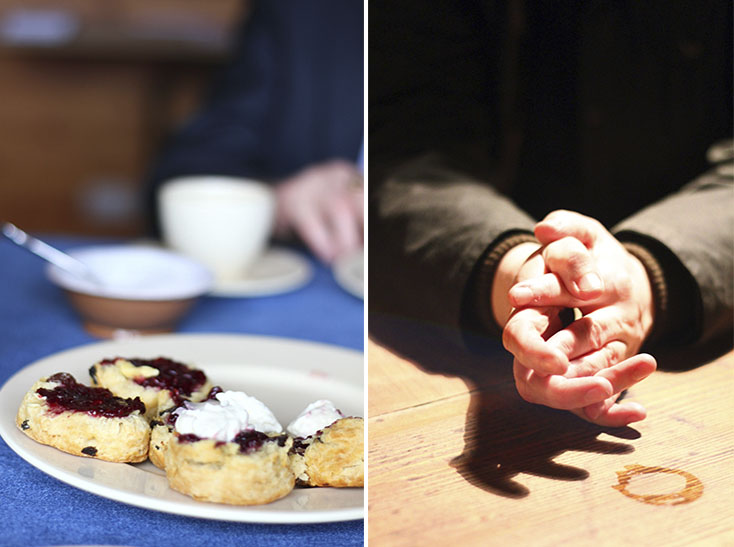
There invite each other to eat and drink simply, but to eat and drink together.
Plutarch
When parents punish their children in films for getting into trouble, nine times out of ten the punishment is connected to the home and family routine and is often quite rudimentary, we hear cries of "Go to bed without dinner!” as the poor culprit heads off morosely to his room. A cliché, one might say, if it wasn’t for the fact that going to bed without dinner is not only a denial of food, but also the pleasures connected to it: socializing, sharing, the acceptance of an individual within a group. In fact if we look at the etymology of the word Convivio (the Banquet) means “to live” and in particular to do so “together”.

The traditional cuisine of the people from Western Ireland with their feet on the ground as they look towards the horizon, encompasses every aspect of their history, and they view the act of eating as an opportunity to get together, for closeness and openness towards others. In Mayo there’s no chance of an impromptu guest not receiving a warm welcome and a couple of blueberry jam scones, just as there’s no chance that a pub won’t always have a hot mutton soup ready for its customers or chicken and potatoes and a bit of soda bread to warm them up on rainy Autumn days. For the people of Mayo, food is like an outstretched hand, always ready to shake yours, showing itself for what it is, waiting for you to do the same. And so by its very "dialectic" nature the gastronomy of Western Ireland is constantly evolving whilst able to retain its traditions, fearlessly embracing change.

The people of Mayo are well aware of the strong connection between history and food and how one influences the other. Vivid memories remain of the Great Famine that decimated the population in the mid 1800s due to a fungus that ravaged the potato crops, a food then, and still today, forever present on every Irish table. Traces of the unbreakable bond between the people of the county and this food can be found for example in the Boxty, a type of potato bread invented just before the famine as a way of utilizing inferior quality crops. Also the Colcannon, a traditional flan made with simple ingredients and eaten mainly in winter.
Nature as it is in Mayo, where water is at every corner, whether it be in the form of a stream, river, lake or the infinite ocean, interacts and offers its gifts to man. The numerous ways to taste the wild salmon that thrives throughout the county are celebrated with the annual Ballina Salmon Festival, a crossroads of flavours, stories and talents, now in its 50th year.

As for the meat, in a place where for centuries endless pastures of green stretch towards the horizon, it’s impossible that it doesn’t have its place. Lamb, pork and beef are the main ingredients found in many of the county’s popular traditional dishes, such as Irish Stew, a mutton stew cooked with onion, parsley and thyme; lamb skewers or pork and apples.
Yet in Mayo, the love for culinary tradition is never a constraint, it’s not synonymous with poor prospects, on the contrary, it’s constantly changing and shared with the world. Just take a trip to Westport to see how much personality and vivacity animates today from the food service industry in the county. It’s no coincidence that Westport holds a famous food festival: in September the town is overrun with stalls serving all sorts of delicacies, in a setting which combines the smaller producers with the biggest chefs, offering a wide variety, each one important and ready to compete for a common goal, an inclusive and democratic banquet, following on the custom taught to its people by history itself.
